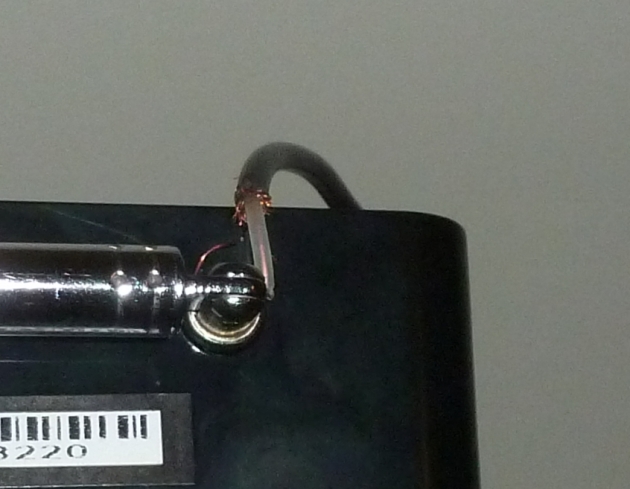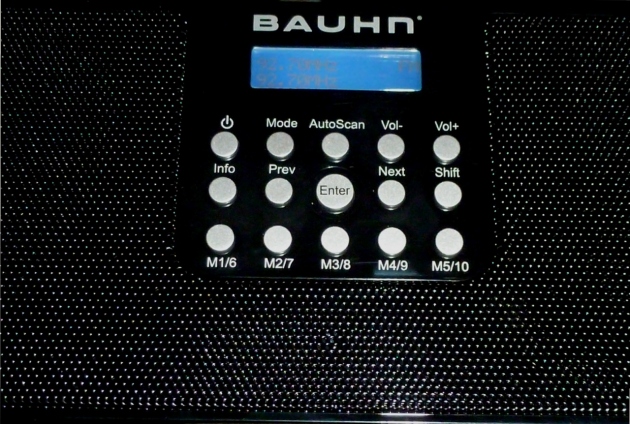Salvage for salvation: budget FM radios in a post apocalyptic world
June 21, 2014
Historical records suggest that this electronics shoot out was conducted during a chilly, overcast winter morning. It was as bleak and lifeless as a post nuclear apocalyptic scene akin to the Terminator. It was speculated that a small gang of elitists running the incumbent government had somehow vaporized the masses of decent folk with their relentless, soul-destroying dogma and double talk.

Apocalypse © 2008 Michael Lehenbauer
All was not lost. The ‘suits’ had left some populist toys to play with. The few broken souls that remained in the city post apocalypse grabbed their toy radios. These were amongst their only remaining electronic devices. Could these rescue them from sheer desperation?
It was rumoured that the internet – the old world hub of information transfer had been sold by the self-interested elite to the highest bidder. Restricted to the highest echelons, few mortals possessed the social connections to enable access to the electronic network that once had the capacity to empower the disenfranchised and wealthy alike. Now, social mobility was virtually impossible.
No weather indicators to were available. Accordingly, tropospheric enhancement to FM signals could be tracked on-line. Synoptic charts were not available. The FM band that did exist was as boring as hell, filled only with those routine permanent FM signals. DX enthusiasts (those that monitored distant radio signals) were a forgotten breed. In this new world order, survival was the only concern. Hobbies became solely the domain of the wealthy.
But the nightmare was only beginning. It is clear that the poor mortals (those determined few that were left) struggled on with their souls intact. As pointless as it seemed to be in that environment, their capacity to test and experiment would endure.
It is now known that amongst the ruins of their old municipalities they conducted many seemingly fruitless tests. What follows is one such test; a shoot-out. Where possible, the original source material is quoted from…
Populist’s dream radio shoot out
The simpletons focused on two cheap ‘bastards’ with a ‘fearsome’ reputation to uphold. When the economy still functioned, these radios were purchased at retailers like Junk World. It was said that the two machines the simpletons had chosen empowered them, coupled with their tenacity to ‘fight it out until the death’!
A populist’s dream, the contenders consisted of the ADS Tech RDX-155 Instant Radio USB device versus discounter Aldi’s entry level Bauhn ADS-215 dual band portable radio…
Testers’ performance data
Table 1: Sensitivity equivalence illustrating selected moderate-weak stations
| FREQUENCY | DISTANCE | POWER | INSTANT RADIO | BAUHN |
| 88.5 | 53mi | 26 kW | YES | YES |
| 89.3 | 48mi | 25 kW | YES | YES |
| 90.5 | 43mi | 200 watts | YES | YES |
| 91.1 | 35mi | 10 kW | YES, RDS | YES, RDS |
| 91.7 | 53mi | 26 kW | YES | YES |
| 92.1 | 43mi | 5 kW | YES | YES |
| 92.5 | 48mi | 25 kW | YES | YES |
| 94.1 | 48mi | 25 kW | YES | YES |
| 94.5 | 88mi | 100 kW | YES | YES |
| 94.9 | 26mi | 50 kW | YES | YES |
| 95.3 | 88mi | 100 kW | YES | YES |
| 95.7 | 53mi | 26 kW | YES | YES |
| 96.9 | 88mi | 100 kW | YES | YES |
| 97.7 | 53mi | 26 kW | YES | YES |
| 98.5 | 88mi | 100 kW | YES | YES |
| 102.9 | 25mi | 48 kW | YES | YES |
| 104.1 | 65mi | 1 kW | YES | YES |
| 105.7 | 48mi | 10 kW | YES | YES |
| 107.3 | 48mi | 10 kW | YES | YES |
Table 2: Marginal signals illustrating reception differences between the two budget receivers
| FREQUENCY | DISTANCE | POWER | INSTANT RADIO | BAUHN |
| 90.9 | 25 mi | 48 kW | 2 / 2 | 0 / 2 – ACI |
| 95.9 | 40 mi | 1.6 kW | 0 / 2 – RFI | 2 / 2 |
| 96.1 | 88 mi | 100 kW | 0 / 2 – RFI | 1 / 2 |
| 99.4 | 48 mi | 2 kW | 2 / 2 | 1 / 2 |
| 100.6 | 48 mi | 2 kW | 2 / 2 | 1 / 2 |
Salvaging suitable antenna connections
The Bauhn ADS-215 radio was also connected to the rooftop antenna via a 1 m / 3.28 ft high grade RG59 cable. To connect the antenna internally would void the warranty. Moreover, it is difficult to achieve this as the plastic case must be plied open, since there are no screws!
On the unit, cable was connected to the DC adapter ground [not pictured] and the collapsed telescopic antenna. The radio was powered using the supplied 5 volt DC adapter.
Optionally, if cutting coaxial cables is unpleasant, connection can be easily made via a 30 cm / 1 ft twin-lead wire then a 4:1 matching transformer. To be perfectly honest, transformers do pose some insertion loss as part of any antenna system. Surprisingly, no difference in signal strength of weak stations was detected between connection methods.
RDX-155 Instant Radio was connected to the rooftop antenna via a 1 m / 3.28 ft high grade RG59 cable. This cable also may cause some loss of signal and be susceptible to interference from the USB device. Sure, RG6 quad shield cable is better, but in practice the centre conductor is too thick to reliably connect to a pint- sized USB PCB. The laptop was powered using a battery.
It is speculated that access to laptop computers was not a trivial matter. Computers were rare and prized possessions in post apocalyptic life. Because access to the internet was predominantly impossible, these computers were useful for processing needs only and recording data.
Fortunately, Instant Radio posed few Central Processing Unit (CPU) demands and looks to have functioned remarkably well on these old machines. How the simpletons ever charged that battery without a reliable mains power grid (they could not afford the onerous electricity bills) remains a mystery…
Post apocalyptic broadcasting
Records show that only an FM test was possible. But it was noted (amongst the word processing files found) that with the Bauhn dual band radio, full strength DAB+ reception (174 – 240 MHz) was available with the rooftop antenna. Photos were found of the graphical bars of the signal meter. Its Gyro Signal 1128 chip permitted satisfactory dual band reception at this time. (We don’t know the manufacturer’s objective sensitivity measurements for this module, but an Adobe Reader document with the FM performance of their 2005 module can be found via the end links). Retailing at $30, the Bauhn ADS-215 radio was likely to be an affordable choice for those with limited fiscal capabilities.
No contemporary music was being released or recorded. The broadcasts on the DAB+ multiplexes in these times included songs performed by old school cover bands such as Il Divo & Celtic Thunder. Music that was deemed to be fodder for the oppressed was reportedly banned for broadcast. For example, ‘aggressive’ releases by Neil Young, Metallica, the Dixie Chicks & John Butler Trio were illegal to broadcast, even if the recordings had been retained by some members of the elite. It has been suggested that the themes in these artists’ works may have been incompatible with the extremist ideology of the ruling elite…
Luxurious RDS performance suggested
Seven signals in the [above] table are known to provide digital Radio Data System (RDS) data. Six of these signals were too weak to decode. Only one quieting-level signal was included in the test, a broadcast on 91.1 MHz. On this channel, RDS data decoded easily on both units. RDX-155 Instant Radio offers faster decoding than the Bauhn ADS-215 radio. The Programme Type data (alone) decoded reasonably quickly on the Bauhn radio, but Instant Radio has a clear edge.
The Bauhn ADS-215 radio will display unique station identification codes called PI codes as part of the RDS digital data. This feature may offer potential value for DXing.
Post war, it is known that the elite took control of electronics and computing power. Whilst the elite played real life games on the stock market, the mortals continued their desperate simple tests. Trivial? Indeed. But it is all they had. They continue…
Differences testers observed
Where differences were noted between receivers on any particular frequency, the test was conducted twice. Between 95.9 – 96.1 MHz, no signal was heard due to heavy interference obstructing potential reception on RDX-155 Instant Radio. The interference was caused by a spurious signal.
This annoying side effect is a widely reported issue with the device that cannot be readily remedied by ferrite suppression chokes. It will be offset by a masthead amplifier, of course. Conversely, no spurious signals were observed on the Bauhn ADS-215.
On 99.4 MHz & 100.6 MHz, only weak signals were detected. Nonetheless, RDX-155 Instant Radio appeared to outperform its rival in terms of sensitivity. On 90.9 MHz, no signal was detectable due to adjacent channel interference obstructing potential reception of the broadcast on the Bauhn radio. Again, this suggests selectivity out-performance by the Silicon Laboratories’ (Silabs) integrated circuit inside in the Instant Radio.
It is thought that back in the ‘olden days’, Silabs produced radio electronics that every man, woman or android could afford. Although Silabs mainly produced chips for portable standalone radios at this time, the RDX-155 Instant Radio represented somewhat of an oddity; a discontinued $17 computer-based tuner in a tiny USB enclosure.
Intermodulation dynamic range was tested on empty or very weak channels. Strong signal immunity is extremely important for FM reception applications and arguably a more important characteristic for any FM tuner than any simplistic sensitivity measurement or test. It is pleasing to report that no ‘ghost signals’ were detected on either receiver, despite the congested band. Accordingly, a high quality signal amplifier (ideally a masthead amplifier, positioned at the antenna) may increase sensitivity without compromising performance.
Simpletons’ summarized observations
The test (as collated in the table) suggests that potential differences in sensitivity, (if any exist) are likely to be negligible between ADS Technologies’ RDX-155 Instant Radio & Aldi’s Bauhn ADS-215. Weaker signals, such as the 90.5 MHz translator are not readily detected in flat winter conditions. The performance of Instant Radio was superior on three stations (probably due to better sensitivity and selectivity) but internally generated interference tended to offset any gains.
These findings suggest that the simpletons were confident both units would provide satisfactory FM reception for the modest outlay they originally paid at retailers like Junk World.
The broken souls understood a masthead amplifier could be used with these inexpensive receivers to improve performance when coupled with an external antenna.
It was beyond the means of most, but they found some antenna pre-amplifiers on the streets; regrettably their beloved streets had become so littered with redundant electronics their suburbs resembled a rubbish dump. These cheap radios gave the broken souls hope for the future. Finally their story of hope can now be shared for the benefit of future generations.
Society’s future is unwritten. Government policy or individual action that promotes greed, entrenches class divisions & exacerbates poverty is the real ‘junk’ of the world!
Non-fiction reference material!
Extensive test of Instant Radio RDX-155
Boxing kangaroo test of Bauhn ADS-215
Gyrosignal 1122 FM/DAB receiver module specifications























